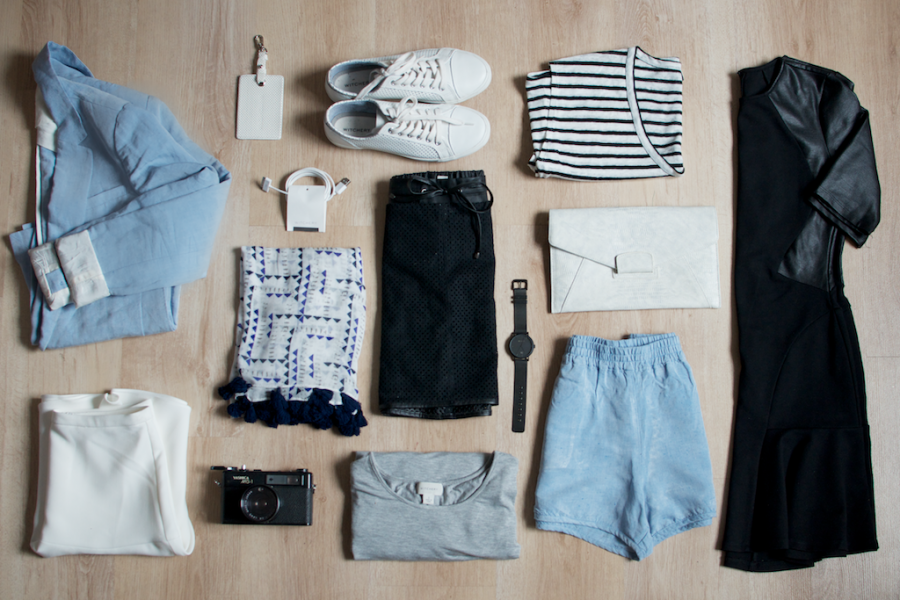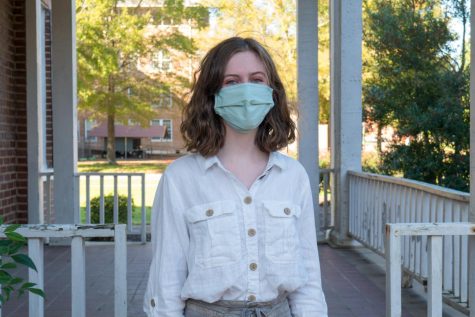Snodgrass: It’s time to pay attention to the first ‘R’
Geneva Vanderzeil apairandasparediy.com, CC BY 2.0, via Wikimedia Commons
Changes in clothing choices and purchases could positively benefit the environment.
February 3, 2021
As children, we were taught that the best way to help take care of the planet was to follow the “Three Rs”: reduce, reuse and recycle. The climate crisis is exploding worldwide, and thankfully many people are paying attention to it and trying to make changes in order to save our crumbling home.
However, we tend to put too much focus on “reuse and recycle” and almost always ignore what I believe is the most important “R” in the list: reduce. The solution to this? Minimalism, especially in regard to clothing.
Americans’ attitude towards clothing needs to change. Popular culture has recently initiated a shift towards sustainably-sourced and secondhand clothing, which is progress, but by and large this change has been “for the aesthetic,” not out of real concern for the environment. At the end of the day, the core of the problem comes back to “reduce.” We buy too much and throw things away too quickly.
Clothing isn’t valued now the way it was seventy years ago. In 1950, 12% of a family’s total income would go toward purchasing clothing. By 2003, that number was down to 4% and has since continued to drop. And we aren’t buying any less of it: In 1930, the average woman owned nine distinct outfits. Today, that number is around 30, a unique outfit for every day of the month– ridiculously unnecessary and extravagant.
Not only are we purchasing more clothing than is needed or even worn, mending and reworking clothing is a lost art from Generation X and onwards. Clothing has become cheaper and cheaper, to the point that trying to fix that stain just isn’t worth the effort–so the clothing ends up in the trash bin.
I can recall multiple instances in which I stained or put a hole in a piece of my clothing, to which my mother would predictably respond, “It’s ruined!” Oftentimes I would agree with her. But had my shoes truly lived out their full usefulness just because a small smudge of orange paint marred the lining?
We as a culture are obsessed with keeping our clothing and shoes looking brand new, and while it is important to take care of what you own, it becomes excessive when a dress stays unworn in a closet because of a fear of it being “ruined,” or a pair of sneakers making it out the door once in their lifetime out of a fear of creases. Clothing is meant to be worn until it loses functionality, not until you lose interest in it.
The best way to ensure value and minimize anxiety over tears, holes and fraying is to invest in quality clothing, which can be expensive. That is why minimalism towards our wardrobes is so necessary. Cheap clothing is appealing because of the sheer amount of it you can purchase with $100, but quality should not be sacrificed for quantity.
Quality clothing is accessible through careful saving for new pieces and through shopping at thrift stores; cost should not be a barrier. In the long run, purchasing a $140 pair of boots that last a lifetime is much less costly than purchasing a new pair of $30 boots every three years or so when the old ones wear out.
Do the environment and your wallet a favor: Buy less clothing, and buy smart clothing. Sew or patch holes, dye stained garments and upcycle old styles. Shop at and donate to thrift and vintage shops. Remember that “reduce” is the first R for a reason.










Mabrie • Feb 4, 2021 at 12:51 pm
This is so good!!